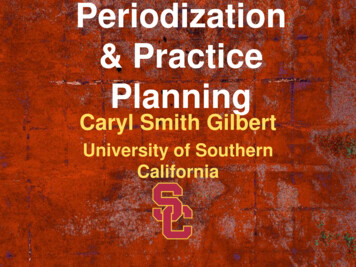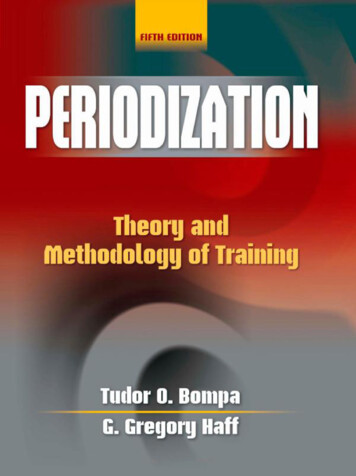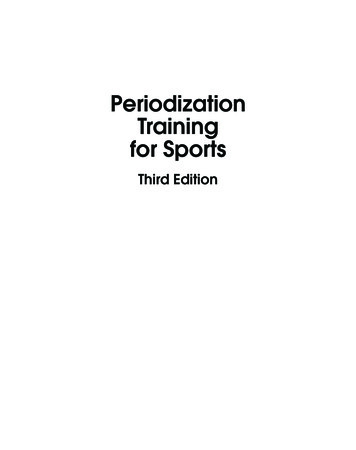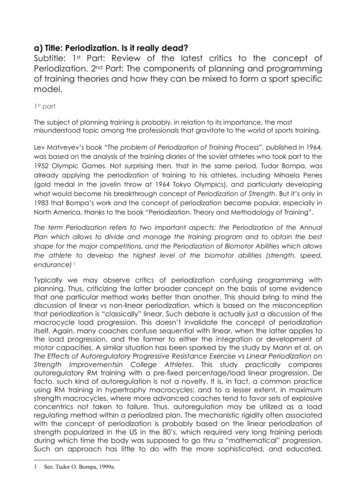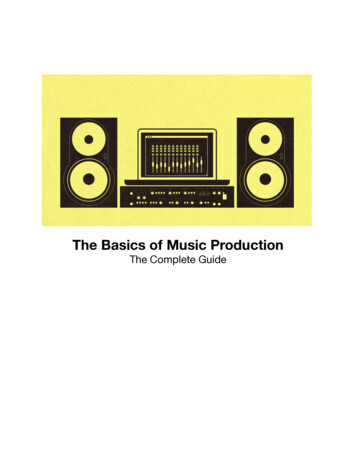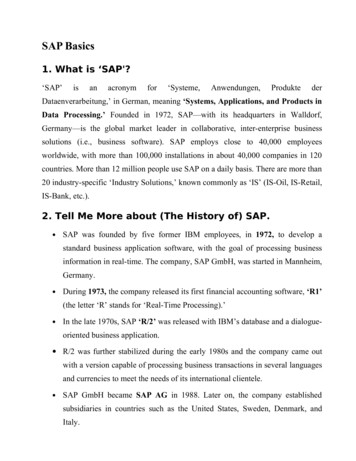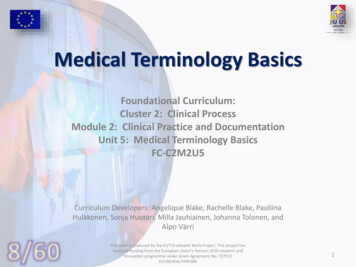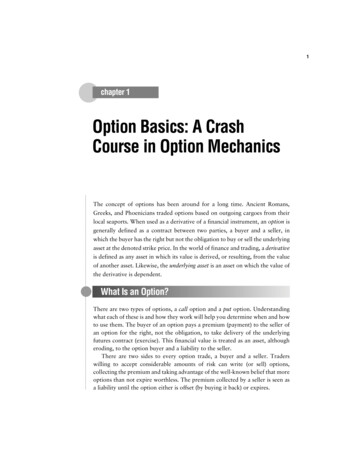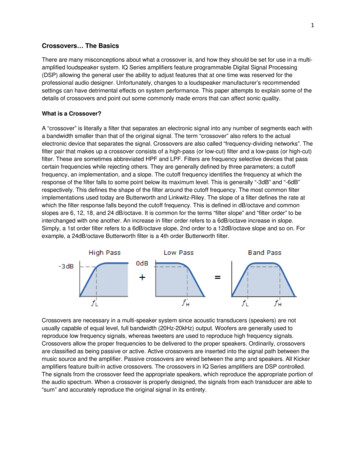
Transcription
The Basics of PeriodizationFor SoccerLearn about how systematic planning of athletic training can help youreach peak performance levels during the competitive soccer seasonRichard Bucciarelli
2Introduction to PeriodizationPhases of TrainingMacro-Cycles & Micro-CyclesBasic Planning StrategiesPre-Competitive PhaseCompetitive PhaseAbout Soccer Fitness Inc.Title of the book3456667
Periodization is the systematic planning of athletic or physical training.The aim is to reach the best possible performance in the most importantcompetition of the year. It involves progressive cycling of various aspectsof a training program during a specific period.In soccer, there are many games/competitions throughout the competitive season, all ofwhich are important for a team to be successful. Thus, in soccer, periodization should involveboth a plan to peak for the start of the competitive season, and a plan to maintain fitnessthroughout the majority of the season.The Basics of Periodization for Soccer3
1. Pre-Competitive2. Competitive3. TransitionThis is the pre-season. InThis is the competitiveThis is the time off, inyouth soccer, pre-season canseason. In youth soccer, thebetween the end of thebe long ( 10 weeks). Thecompetitive season rangescompetitive phase and thefocus is on aerobicfrom 15-20 weeks (May tobeginning of the next year’sendurance and strengthSeptember). The focus is onpre-competitive phase. Thedevelopment.development of anaerobicfocus is on rest and recovery,capacity, muscular power,maintenance of aerobicand maintenance of aerobicfitness, increasing musclefitness.size, and addressingfunctional weaknesses.The Basics of Periodization for Soccer4
Macro-cycles represent longer periods of time within a particular phase (example: 2-4weeks). They may focus on particular energy systems and/or muscular strength protocols(example: general aerobic energy system training, muscular strength with 3 sets of 10RM)Micro-cycles represent shorter periods of time within a particular phase (example: 1week). They may focus on smaller goals for the particular week, or even for the particularworkout, for example:Aerobic endurance Micro-Cycle in the late pre-competitive phase: Day 1: 4 x 4 minutes / 4 minutes active recovery Day 2: 8 x 2 minutes / 2 minutes passive recovery Day 3: 4 x 4 minutes / 3 minutes active recovery Day 4: 8 x 2 minutes / 1 minute passive recoveryThe Basics of Periodization for Soccer5
Pre-Competitive PhaseProgressionsBreak the Pre-Competitive phase into- Energy system training:2 separate Macro-cycles:Aerobic training Anaerobic trainingLong work periods (2-5 min) Short periods ( 1 min)1. General: energy system andModerate intensity (RPE 6) High intensity (RPE 7)strength training are moregeneral/basic2. Specific: energy system and- Strength training:General exercises specific exercisesstrength training are moreDouble-leg exercises single-leg exercisesspecific to the sport of soccerLow speed exercises high speed exercisesHigh number of repetitions low number of repetitionsCompetitive PhaseProgressionsBreak the Competitive phase into 2- Energy system training:separate Macro-cycles:Anaerobic training Aerobic trainingVery short work periods ( 30 seconds) moderate length1. Intensive: energy system andstrength training are anaerobic,work periods ( 2 minutes)Very high intensity (RPE 8) moderate intensity (RPE 6)with a high intensity and focus onpeak power output2. Extensive: energy system and- Strength training:Specific exercises general exercisesstrength training are aerobic, withSingle-leg exercises double-leg exercisesa moderate intensity and focus onHigh speed exercises low speed exercisesmaintenanceModerate/low number of repetitions high number ofrepetitionsThe Basics of Periodization for Soccer6
Soccer Fitness Inc. was created to help coaches, players, and parents at all levels of thegame improve their knowledge and practical skills related to soccer-specific fitness training.With huge and growing numbers of players registered in Canada at the youth level, it oftenseems that there are just too many players and not enough qualified coaches. Today, mostclubs and academies in Ontario have Club Head Coaches and Technical Staffs, whose primaryresponsibility is to help train, educate their club’s “rep” or competitive coaches, and ensurethat they are able to plan and deliver appropriate technical and tactical training to theirrespective teams. Physical training of soccer players, however, seems to be the missing link inmost clubs’ overall training programs.Soccer Fitness Inc. is a company that aims to help coaches, players and parents inunderstanding and implementing appropriate physical training programs for themselves andtheir athletes.If you are a fitness professional and/or soccer coach looking to increase your knowledgeand practical skills in the design and implementation of soccer-specific on-field fitness trainingvisit gymnut.co/soccerfitnesstrainer now!The Basics of Periodization for Soccer7
of a training program during a specific period. In soccer, there are many games/competitions throughout the competitive season, all of which are important for a team to be successful. Thus, in soccer, periodization should involve both a plan to peak for the start of the competitive season, and a plan to maintain fitness throughout the majority of the season. The Basics of Periodization for .File Size: 609KBPage Count: 7
